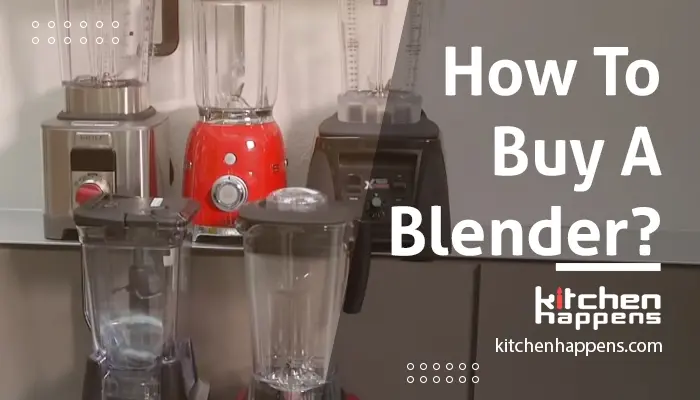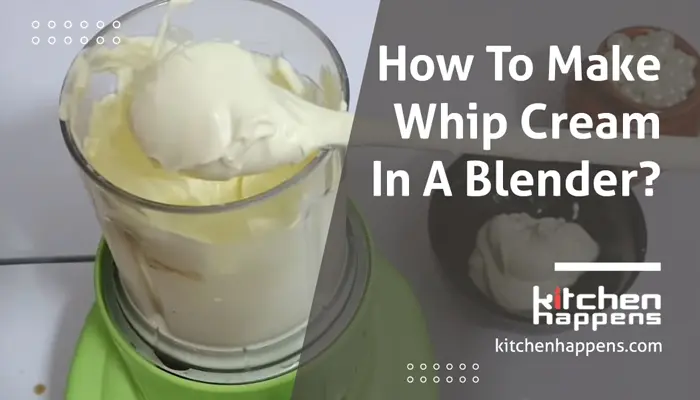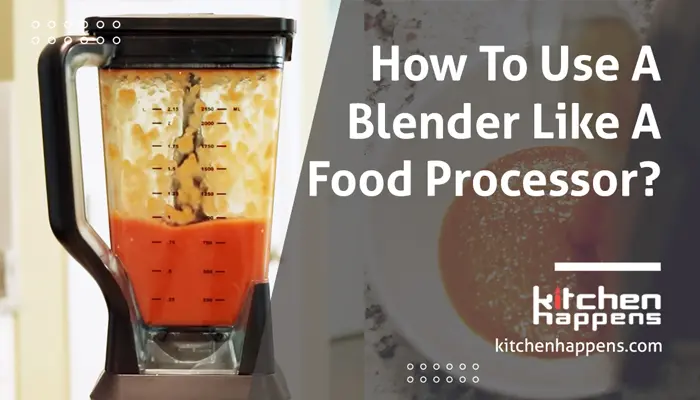Blender is an appliance that makes most of our kitchen work easier and quicker. Whether it is chopping, crushing, pureeing, or mixing, everything can be done within minutes with the help of this small but powerful device. From making shakes and smoothies to soups, a good blender opens up many possibilities for you to try new recipes daily.
And after you learn the significant impact of blenders on shortening food preparation time, the only sentence that comes to mind is I want to buy a blender as soon as possible.
But, wait, wait! Even though buying a blender sounds like a simple task, there are many different models and functions to consider to ensure your appliance purchase will match your demands.
Well, don’t worry. It’s my job to ensure you won’t make any wrong decisions. And my today’s extensive guidelines on how to buy a blender will help you figure out which blender is best for you. So, if you stick with me through to the finish, you’ll be able to make a choice you won’t regret!
How to Buy A Blender? 4 Stages to Help You Choose The Right One
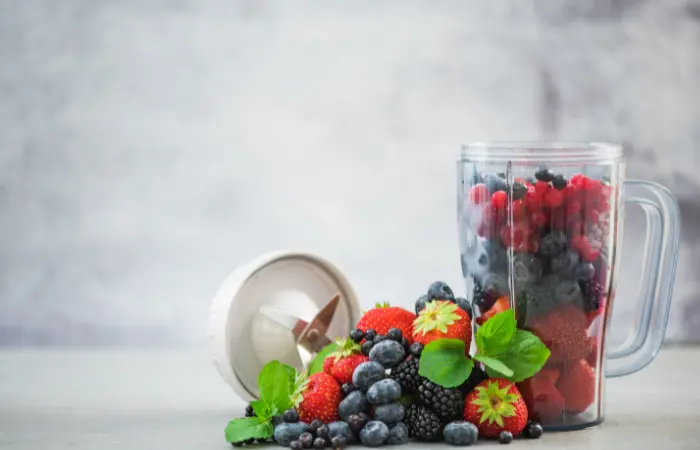
In the market, you will find hundreds of blender models. Many people just choose one randomly; some even go with the one they saw their friends or neighbor using. None of these makes sense, as everyone has different needs and budgets.
So, to guide you on how to buy a good blender that will meet not only your requirement but also your budget, I have arranged four stages that will lead you to take the right decision in the end.
In stage 1: You will learn about which type of blender is suitable for you.
In stage 2: You will find which factors to consider while purchasing a blender.
In stage 3: You are gonna gain knowledge about different brands’ blenders and their special characteristics. From this, you can make up your mind about a model to buy.
In Stage 4: You also need to know about the best place to buy a blender, and that’s what stage 4 is all about.
Alright, let’s begin our buying guide from here.
Stage 1: Discover The Type of Blender You Need
There are different types of blenders available; some can do basic functions like pureeing, while others can perform hard tasks like crushing ice, blending nuts, etc. Every type of blender has distinct capabilities and functions.
And if you don’t know which type is for which purpose, you will make a wrong move and end up with one that barely meets your needs.
Therefore, in this stage, I will tell you extensively about the 4 main types of blenders, from what functions they have, what they are most suited to blend, and so on. Now go through each type and find out which is most suited for you.
1. Countertop Blenders
Countertop models are the most common type of kitchen blender. They have several features and styles. If you don’t have any issues with counter space in your kitchen, this may fit your requirement.
These blenders have a motor inside their base and a spinning blade attachment. Many countertop blender manufacturers even offer additional mixing attachments that you can attach to the base and use for doing some other work like chopping and grinding.
Every countertop blender comes with a 1 to 2 liters jar made of plastic, glass, or stainless steel. The glass ones are heavier and more stable, while the plastic ones are prose to scratching and likely to absorb the smell of blended food. Additionally, stainless steel is preferred for its attractive look, but you won’t be able to see the food as it is blended.
Countertop blenders are often referred to as classic, traditional, or conventional blenders. So, don’t think that they are different types of blenders because of the different names.
Anyway, the sides of the container are labeled with volume measurements that will help you to add the correct amount of ingredients. And to prevent spilling during blending, the container has a removable lid.
Countertop blenders have several speed settings, and each level produces a different consistency. So, you don’t have to think about overmixing. Just select the right speed for your food and keep checking in between blending. The blender will have a minimum of three speeds. However, some models have up to 10 speeds.
Now, what about the wattage range, right? After all, how fast it will blend depends on this trait. Well, usually, the wattage ranges between 300 to 700 watts, which is enough for everyday blending tasks. By the way, there are some models that have more than 700 watts of power.
When it comes to talking about cleaning, you can remove the jar from the base and clean it. Some blenders are dishwasher safe, so you can check whether your model has this convenience or not before buying.
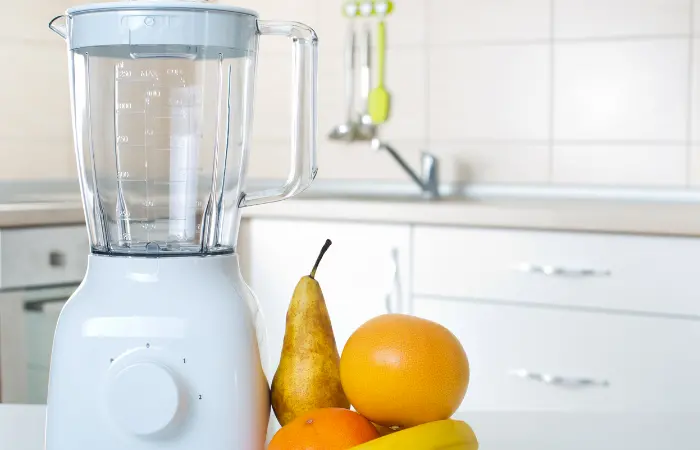
A feature that you should consider is whether the blender has an easy-to-clean detachable blade, as it makes cleaning much more safe and easy.
Now, look at the pros and cons of these blenders in a blink.
Pros
- Powerful enough to blend a wide range of ingredients from fruits to vegetables
- An excellent option for blending large batches because of their jar capacity
- Inexpensive than some other types of blenders
Cons
- They can be pretty loud
- They are quite large in size than other types of blenders means they occupy significantly more space
- If the blender model isn’t dishwasher safe, it won’t be easy to clean with the hand
- Some higher-end countertop blenders are quite expensive but don’t even offer a wide number of features
2. Immersion (Hand) Blenders
Immersion or hand blenders are also referred to as stick blenders. They work differently than the other jar blenders because they don’t have a container like the others. Instead, you have to lower them into a container where you have put your foods to blend.
They have a rotating head that you need to immerse into the container where the foods are placed, then turn it on, and it will start to blend the food. It means they offer the convenience of mixing and pureeing right in a bowl or pot on the stove. As a result, you will end up with fewer dishes to clean up.
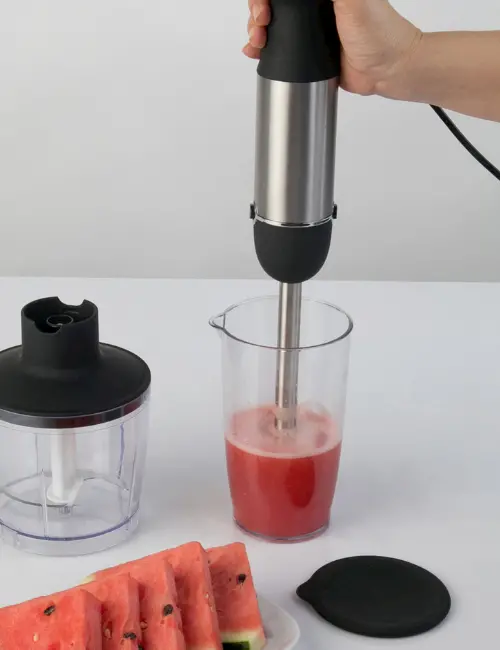
Because of their smaller blade foot, you can easily use them to blend a small amount of food. Hence, you may choose this blender to blend baby food for one or two servings.
Anyway, since stick blenders are relatively smaller in size, they take up much less space in your kitchen than the other blenders. You can easily store them in a drawer; some models even have handy wall racks.
Now, with all of these advantages, they have several disadvantages too. First of all, they don’t blend in a container with a lid, which means you may end up making a mess when turning them on. Also, unlike the other types of blenders, they cannot blend a wide variety of foods and accomplish some other common tasks.
They are only ideal for pureeing cooked foods, blending simple drinks, creaming soups, etc. So, if you want to buy a blender that can perform a versatile job, there are better options than this one.
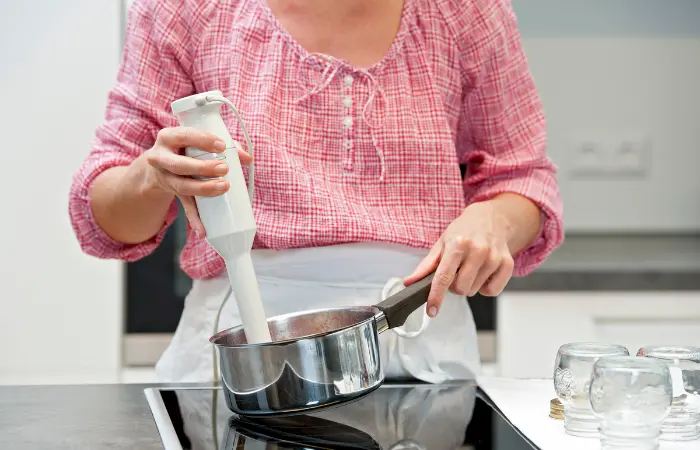
Also, their power is limited, and they can’t handle a large batch of food at a time. So, I advise you to buy a hand blender only if you want an extra convenient option of a blender but don’t go for it if you will use this as the only blender in your kitchen.
Let’s quickly review the benefits and drawbacks.
Pros
- An excellent option when you are away from home because of their portability and small size
- Compared to larger blenders, they are much easier to store
- They are easier to clean because they have fewer parts
- Inexpensive
Cons
- Typically can’t handle tough ingredients like vegetables, and leafy greens
- Unable to blend loads of ingredients or more than a single serving
- Motors are not powerful compared to other types of blenders
3. Professional / High-Performance Blenders
These blenders are specially designed for professional chefs and food enthusiasts who love to cook various dishes. However, they are far more expensive than the more affordable blenders you can get at your local grocery store. But, of course, the higher costs come with a performance that is more advanced and diverse than the other types.
High-performance blenders are pretty expensive and usually cost several hundred dollars, starting at roughly $200 and potentially going as high as $1,000.
Professional blenders are specifically designed to handle heavier duties such as making peanut butter or blending larger pieces of produce. They can easily tackle the most challenging and tough smoothie ingredients with ease. The result will be a silky smooth perfect texture.
Most people prefer the texture of smoothies and soups that are made from a professional blender. So, if you are looking forward to buying a blender that can make more than one serving of smoothie, this type is highly recommended. By the way, there are more reasons for the recommendation.
These blenders work at a higher voltage level, offering more power than the others. And this is rather the reason these blenders are so loud. Moreover, they are likely to come with a warranty, which means you can use them for daily rough use for several years.
So, if budget isn’t a problem for you, go for a high-performance blender without a second thought. It’s totally worth paying extra bucks for excellent durability, finer textures and consistency, and more heavy-duty usage.
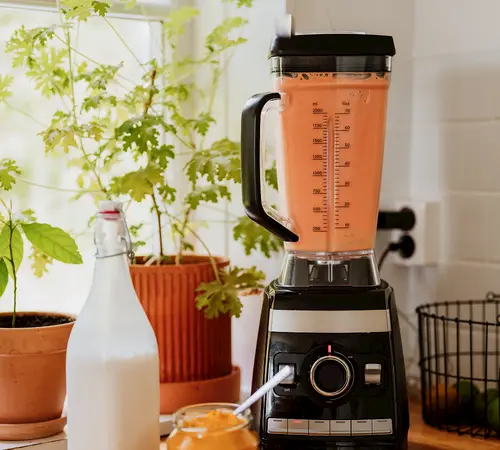
Here are the advantages and downsides for easy comparison.
Pros
- Can achieve the perfect smoothie texture and consistency
- Capable of handling more than one or two servings of produce at a time
- Can process hard ingredients without any risk of damaging the motor
- Powerful enough to blend a variety of different ingredients at high speed
Cons
- They need more storage space due to their size
- Relatively expensive than the other types
- They can be loud
4. Personal / Single-Serve Blenders
As the name suggests, these types of blenders are designed for single servings. If you wanna know how to buy a blender for smoothies, then you may opt for any type as almost all blenders can smoothies. But if you only make smoothies for yourself, single-serve blenders are the best for you.
While countertop and high-performance blenders have large containers which are big enough to make a decent quantity of soup or salsa, they are excessive for someone who only wants to prepare one smoothie.
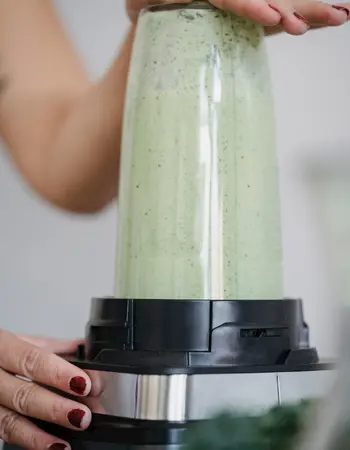
On the other hand, personal blenders have smaller containers which are the perfect size for blending one drink at a time. Some of the models even come with lids for the container so that you can carry your smoothie wherever you go.
Hence, if you are a fitness enthusiast, you can choose these small blenders to blend protein powder shakes or smoothies in the morning and carry them to the gym.
Anyway, these blenders usually have 1 or 2 speeds. And they are inexpensive compared to professional and most countertop blenders. However, If you cook a lot and need to make anything for a large group of people, they are not a good substitute for a standard countertop blender.
Instead, if you only need a blender for making a single serving of smoothie or shake, this is likely what you should invest in.
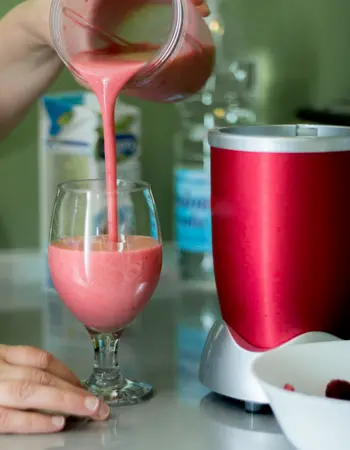
Okay, now take a quick peek at the pros and cons.
Pros
- Requires little storage space because of their compact size
- Perfect blending cup for one serving
- Some of their models can even crush ice
- An affordable option for people who want to make fresh smoothies quickly
Cons
- Due to the upside-down design of this blender, there is some potential for leakage, so you may have to be careful not to overfill
- The blades may need to be cleaned by hand because they are not always dishwasher-safe
- Not suitable for blending large batches of produce
Alright, now that you have gained enough knowledge about what each type of blender is capable of doing and what not, it’s time to move to stage 2, where you will learn which features and functions you should consider while buying a blender.
Stage 2: Factors to Consider When Buying A Blender
You will find various features when you start searching for different blender options. But which qualities should you focus on more? Indeed knowing which factors need to be considered more will make your search easier. So, here are the most important factors that you should consider while searching for the best blender for you.
- Check How Powerful The Blender Is
One of the most common questions that come to mind while shopping for a blender is how powerful your blender should be. Well, it depends on what you plan to blend with it.
For example, soft fruit smoothies don’t require the power of professional blenders. You can choose a countertop or a personal blender with decent power for this job.
But, if you want to try chopping up nuts, you have to think about buying a more powerful one. So, you must know what you might use your blender for before buying it.
Here are some ideas for power ranges that will help you choose.
300 watts: The majority of inexpensive countertop blenders have this power rating. If not all, but most of the hardest ingredients can be chopped with this power. And blending soft items won’t be an issue either.
500 to 700 watts: This is the range where you will get true versatility. With this much power, you can process soups, make slushies, and take your blending beyond just liquids.
Above 700 watts: A blender with over 700 watts of power will let you work with dry ingredients. You can make peanut butter, crush grains into flour, blend tough raw ingredients into a smooth puree, etc.
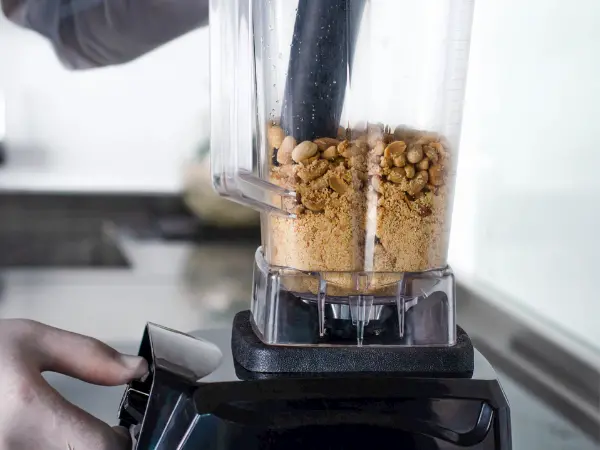
- See What Type of Settings It Has
Almost all blenders offer different settings. It can be simple with only three different speeds or an array of settings for various uses like juicing, crushing ice, or pureeing.
A blender will be more user-friendly if it has preset functions corresponding to the basic tasks you intend to use it for than a machine requiring you to figure things out on your own.
Although having a variety of settings isn’t necessary, it can add more convenience. Some brands use push buttons, whereas some have a rotary clicking dial. The settings don’t always define the speeds but indicate the type of food you produce or the style of mixing you want.
Typically, professional blenders have advanced controls that allow you to choose specific food descriptions. On the other hand, blenders usually come with three speed settings: high, mid and low.
- What Purpose Will You Use It for
This factor is one of the most important ones to consider. You should know what you will be using your blender for.
Suppose you use it for only blending smoothies or pureeing soup. In that case, a simple countertop or personal blender will fit your requirement. However, if you want to use it for various purposes, in that case, you should look at the preset settings offered by the various blenders and the power levels that your ingredients will demand.
Additionally, if you plan to use your blender frequently, it will be best to invest extra money in a blender that will last longer. But, if you will only pull it out for use sometimes, an affordable blender may last a while.
So, decide how regularly you want to use your blender, what new recipes you might want to try, and what you will be using it for most frequently. The answers to those inquiries will help guide you in the proper direction.
- The Blender Size
Here the size doesn’t mean the dimension but the capacity of the blender’s container. The amount of ingredients you can process in the blender jar or container depends on capacity. So, ask yourself how many servings you will need to make and consider the size accordingly.

Standard size: The majority of standard countertop blender jars hold 48 to 72 ounces. You will be able to blend drinks for around 6 to 9 people.
High-performance: Not only are these blenders powerful, but they are also bigger in size. Some models can even hold up to 145 ounces.
Individual servings: Personal blenders only hold 8 to 20 ounces for each serving. If you wish to cook for a family, these are not a good option. You will have to blend ingredients in batches which will take a longer time. But if you need just one serving, this is the right option.
Note: One good news is that manufacturers know that one size won’t fit everyone’s requirements; that’s why many offer blender jars in both large and small sizes. So, if you need both sizes, you may opt for a blender model that offers such.
- Where Will You Put it?
Most kitchen counters are already overflowing with utensils, plates, and condiments. Therefore, you must determine whether there is space for a blender on the kitchen counter and, if not, whether there is space for it in a cabinet or other storage area before you purchase one.
You can free up some space by rearranging a few other things, but you don’t want to end up with a blender bigger than the available space.
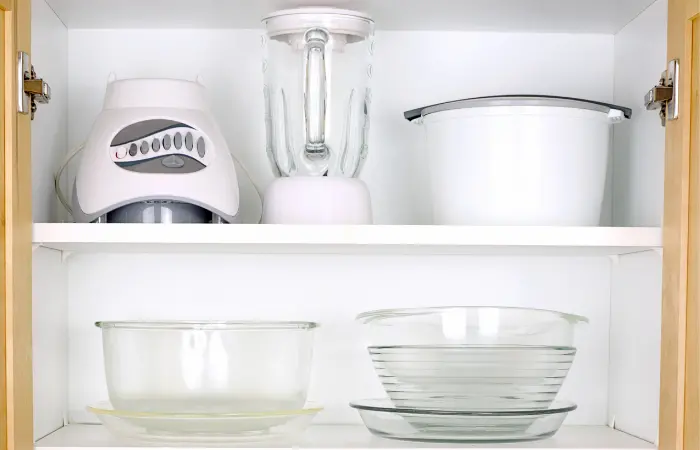
An immersion blender will fit anywhere from the drawer to the cupboard. Also, personal blenders are small enough to fit in a cabinet.
The problem can be created by the countertop and high-performance blenders that are usually bigger in size. So, before buying these, make sure you have sufficient space to fit them.
- Don’t Forget to Check If It Is Easy to Clean
One important thing to keep in mind is that the more pieces your blender will have, the more time it will take for you to clean. Although most blender manufacturers provide dishwasher-safe blades and containers, not all dishwashers can fit blender jars with a larger capacity. As a result, you will have to clean it by hand.
So, before choosing a blender, check your dishwasher’s limitations.
The containers of most personal blenders are dishwasher-safe and can easily be placed in with other cups in your dishwasher. Also, immersion blenders have a few parts that are easy to clean.
The problem can be with the countertop and professional blenders. If their jars are big, they may not fit inside the dishwasher. However, some high-performance blenders have self-cleaning settings. You just have to add water and liquid dish soap and let it run. Then, give it a quick rinse, and you are done.
However, if the thought of having to wash your blender by hand after each use discourages you from using it regularly, look for a blender with a dishwasher-safe container that will fit in your washer.
- Also, Check The Noise Level
A blender will be noisier if it has more power. It’s obvious that the motor, blades, and food processing will make a certain amount of noise.
However, high-performance blenders also have premium noise-canceling materials. So, if you or your family get bothered by loud noise, choose a blender model with a sound absorption feature.
- What Accessories & Attachments It Has
Some blenders come with more attachments and accessories rather than regular ones. For example, some blenders do come with a container for food processing. Those extra parts will add up to costs.
Even the blades also differ from model to model. Some have two flat blades with an upward angle at the edge, whereas some come with four blades with an almost spiral shape.

Each of these designs has different blending capabilities. Some of these blades are for blending dry ingredients into a powder, and some blade designs masticate food more effectively, resulting in silky-smooth consistencies.
Therefore, before buying, check what type of attachments the blender comes with, what their job is, and if they fulfill your demands.
- Check Whether The Lid Fits Tightly
It may seem strange to consider, but it’s also important, like the other factors. Blender lids that fit perfectly prevent unnecessary spills. Imagine if you are blending something hot and it spills on your hand or electric board; it will be a disaster.
Remember that a powerful blender will spin its contents quickly enough to heat them through friction. So, the lid shouldn’t be loose fitting at all.
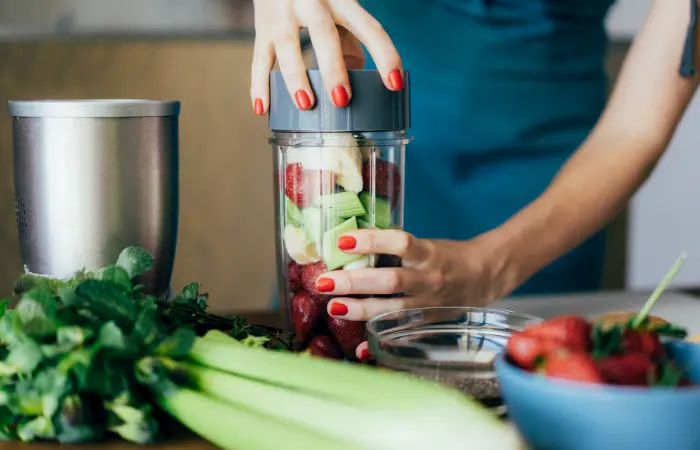
- Your Budget
Cost is often the deciding factor. How much money do you have to spend? Luckily, there is a blender available for every price range. They range in price from a reasonable $20 to a staggering $1,000.
Cost is determined by durability, power, and premium materials. An inexpensive model is enough if you only intend to use your blender to prepare smoothies.
Consequently, an expensive model provides power and variety if you need to use it for various purposes. You can grind spices, knead the dough, and make nut butter.
However, not all expensive blenders are worth the price. So, I recommend you look for user reviews of your chosen blender and spend accordingly.
- Durability
Investing in a blender that will last years is a great move, especially if it’s expensive. So, ensure to check whether the parts like the container, motor and blades are durable enough. Anyway, the warranty for your blender assures you of durability. And that’s the last thing you need to consider.
- Lastly, Remember to Check The Warranty
A warranty is an assurance by the manufacturer of how long your device is likely to run without a problem. If anything happens before the termination of the warranty, they will either replace or fix it for free.
Cheap blenders are made with low-quality materials and low-powered motors. That’s why they have short warranties.
On the contrary, a high-quality blender tends to offer a warranty for ten years or longer. That is a clear sign that the manufacturer is confident in their product.
Hence, carefully read your warranty. Parts like the motor may have longer protection. Other items may have less coverage as they will likely wear out soon and can be replaced.
Stage 3: Learn About The Popular Blender Brands & Select A Model
After deciding on the type and then considering all the features, you need to think of a brand, right? So, what is a good blender to buy?
Well, You are more likely to get a trustworthy product when you choose from a reputable brand. And like any other appliances, there are some brands that dominate the blender market.
So, I looked through user reviews of blenders offered by a few reputed brands to understand their popularity and individuality and listed them here for you to check.
Cuisinart
Cuisinart offers a variety of traditional, personal, and high-powered blenders. They are a well-reputed brand offering different types of kitchenware.
Their blenders have mixed reviews from customers. Where most consumers find them convenient to use and versatile, some users claim that they are too loud, not powerful enough, and break too easily.
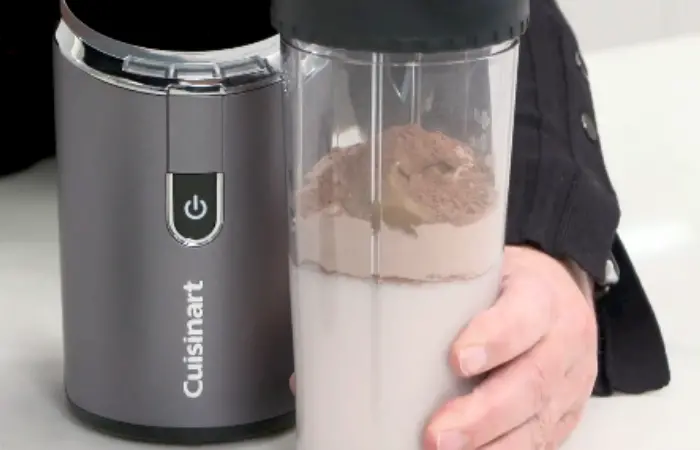
Vitamix
Vitamix specializes in making excellent blenders. That’s why their blenders do well in reviews. Their blenders are strong and can easily handle various heavy blending tasks.
If you choose a Vitamix blender, be prepared to spend some money because they are on the more expensive end of the price range. But the good thing is that buyers generally feel they got their money’s worth.
Ninja
Another popular name in the blender market is Ninja, which sells a wide range of standard, high-performance, and single-serve models. Many of their blenders receive incredibly positive reviews. A lot of people describe Ninja as their best decision.
However, few of their models are met with more conflicting reviews, including claims that they lack sufficient power and are unable to produce soups and smoothies with a smooth enough consistency.
In short, their blenders appear to be generally rather dependable. Yet, I suggest you read the reviews to ensure you buy one of the models that users love.

Hamilton Beach
Hamilton Beach is known for producing inexpensive kitchen appliances that function effectively, considering their low cost. But they won’t provide the level of performance that you get from higher-end products.
Many reviewers praised their blender’s appearance and pricing, although some reported experiencing issues after using it for a few weeks or months. Their blenders often work well for simple tasks. They will probably fall short regarding heavier tasks or frequent use.
Breville
Breville manufactures several blenders. Most of them are high-performance blenders but have traditional and immersion blenders too. Many reviewers agree that their blenders are efficient, quiet, and cost-effective. Others claim they don’t last long enough for the price and break too easily.
The key lesson we can draw from the evaluations is that while Breville’s models typically perform well for a short period, they may not hold up over the long term.
Nutribullet
Nutribullet specializes in making personal blenders. Their blenders have hassle-free components, a minimalist design, and containers made for portable use.
You can opt for this brand if you want a personal blender for making smoothies and protein shakes. Some of their models can even chop through ice and blend tough stems and frozen fruits.
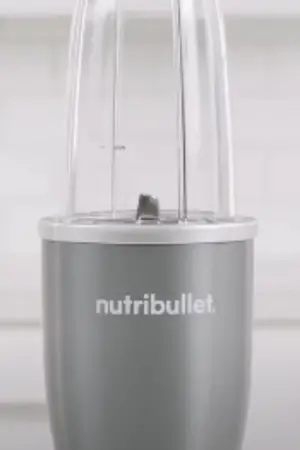
Blendtec
Blendtec offers one of the most advanced restaurant-grade blenders and can perform the heavy duty. And as you know, great quality comes with a price. Thus, these blenders are rather expensive though affordable ones are available too.
This brand is highly reliable, so the price is worth paying. Their professional blenders are hands down one of the best in the market.
KitchenAid
KitchenAid is famous as a trustworthy home appliance brand. Their blenders are fairly priced. Some of their models have pre-programmed settings to make frozen margaritas, icy mocktail drinks, salad dressings, fresh juices, smoothies, and even soup.
Except for all these, there are other blender brands available such as Dash, Oster, Hurom, etc. You may check those out too.
Stage 4: Buy/ Order Online The Blender of Your Choice
After you choose a specific brand’s blender, the final stage is buying your selected one. You can go to the local shop or order online. Sometimes the local stores don’t have all the models. In such cases, online shopping will be best for you. Just make sure you shop from a reliable website.
Well, that’s all about the buying guide. Lastly, here are a few tips for you.
Additional Appliance-Related Tips
Sometimes you purchase a blender after doing research, but it doesn’t meet your expectations after use or damages soon. You should always read the product’s manual for care tips and act accordingly. They are given for a reason so that you can use your appliance for a long time.
Also, there are several blending instructions that make many tasks much more manageable. You will never know what you have missed if you don’t read.
Conclusion
Hopefully, my guideline on how to buy a blender will help you choose the right one for you. Since there are many options available, you may get confused. Which blender is best depends on what you plan to use it for and how often you will blend.
While many customers who spend more money on expensive models are happy as the extra money was worth spending, others who use their blenders less frequently or simply for basic chores are as satisfied with the more affordable brands.
So, if you know what you want to do with your blender, you will definitely find a model that will satisfy you.
Frequently Asked Question
Should I buy a blender or a food processor?
A blender is perfect for making smoothies and purees, while a food processor works best at chopping, shredding, dicing, kneading doughs and mixing cake batters. Although they work almost similarly, there are differences in consistency.
So, which one you should buy depends on what type of work you will do. Nowadays, some blender models come with food processor attachments. You can go for one of those too, and enjoy the benefits of two different appliances.

